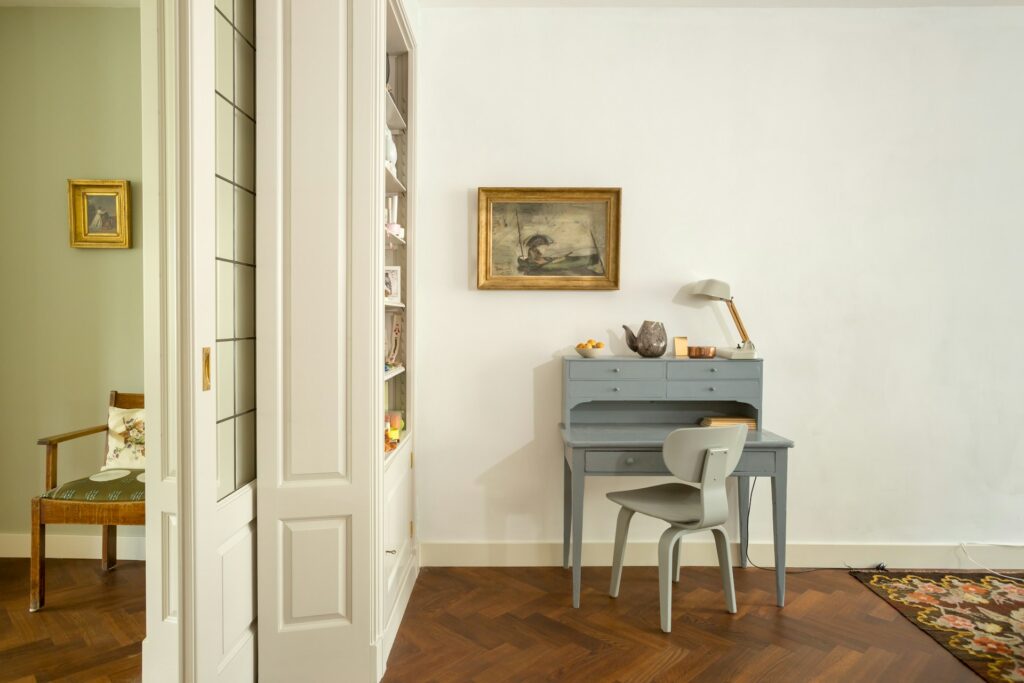Key Takeaways:
- Understanding the transformative power of interior painting.
- Essential steps for a successful DIY interior painting project.
- Tips for selecting the right paint and tools for your space.
- The impact of color psychology in interior design.
- Maintenance strategies to extend the life of your paint job.
Why Interior Painting Is More Than Just a Color Change
The transformation that occurs with interior painting is about perception, feeling, and creating an ambiance that reflects your personality. It’s not just about the color itself but how that color interacts with light, furniture, and even the mood of the individuals within the room. A well-chosen palette can redefine a living space, subtly yet effectively enhancing dimensions and accentuating architectural features. When considering this transformative process, one may seek inspiration and expertise from renowned painters, much like those found with interior painters Denver, whose capabilities transcend mere application to encompass the full artistic potential of interior painting.
Pre-Painting Preparation: Ensuring a Smooth Finish
The secret to a flawless paint job is invariably found in the preparation details. Beyond cleaning the walls, consider the nuances of sanding techniques, the importance of primer for various surfaces, and the necessity of taping for sharp edges. This stage is about vision and foresight—predicting how the paint will adhere and settle so that the final product is smooth, without blemishes or inconsistencies. Tending to caulking, dealing with drywall repairs, and ensuring the environment is dust-free are foundational steps that distinguish a professional-looking finish from an amateur one.
Choosing Your Palette: The Psychology of Color in Interior Design
The power of color in shaping our experience of a space cannot be overstated. It’s the silent language of a room’s interior, where each hue carries emotional weight and can set the tone of a space. When selecting a palette, intuition meets science as we consider personal preferences and the broader implications of how color impacts human psychology. Beyond personal taste, understanding how specific colors can influence thinking, evoke memories, and affect mood is critical in creating an environment that speaks to your desired ambiance.
Understanding Color Psychology
Extensive research has informed the field of color psychology, particularly within living spaces. Studies suggest that colors like blue and green evoke calmness and are well-suited for bedrooms or bathrooms where tranquility is coveted. Conversely, vibrant colors such as red or orange can inject energy into a kitchen or dining area, encouraging vibrant conversation and activity. Tapping into this knowledge is essential when deciding which colors will define the various areas of your home.
Tools of the Trade: Selecting the Right Brushes and Paints
Equally as vital as the colors are the instruments used to apply them. The market offers many brush and roller options, each engineered with specific types of paint and finish in mind. Natural bristle brushes may be ideal for oil-based paints, while synthetic brushes often pair better with water-based options. Moreover, the finish of the paint—matte, eggshell, semi-gloss, to name a few—plays an integral role in both the textural feel and the ease of maintenance of your walls.
Picking Quality Materials
An investment in quality must be noticed in the realm of materials. Top-tier paints offer superior coverage, more profound depth of color, and enhanced durability. While the temptation may be to save on cost, budget paints can lead to a compromised finish requiring frequent touch-ups. Similarly, quality tools result in better paint application, reduced bristle loss, and a more even coat, contributing to a more professional appearance overall.
Technique Matters: Tips for Professional-Looking Results
Even with the best equipment and materials, the technique makes a paint job perfect. Each motion should be deliberate from the initial cut-in along the edges to the final stroke. Maintaining a wet edge, rolling paint from ‘W’ to ‘M’ shaped strokes, and back brushing are techniques that professionals use to avoid lines and streaks. Coupled with patience and precision, these techniques will make all the difference for those aiming to achieve professional-looking results at home.
After the Paint Dries: Cleaning and Maintenance Tips
The true test of a paint job is not its initial beauty but its longevity and ability to withstand daily life. Regular dusting, immediate attention to spills, and the gentle cleaning of smudges will keep your walls pristine. Be mindful of the type of paint finish when cleaning—some are more forgiving than others. By choosing a formula suited to the rigors of your household, you minimize the need for frequent touch-ups and guarantee your walls continue to reflect your chosen aesthetic for years to come.
The Role of Interior Painting in Home Renovation Trends
Fashion in home renovation shifts continually, and interior painting remains central to this ever-changing landscape. The aesthetic tide has veered from striking accent walls to minimalist palettes, and staying current with these shifts can reinvigorate a space and echo your evolving personal style. Savvy homeowners and designers keenly watch these shifts to ensure their living spaces remain modern and timeless.

